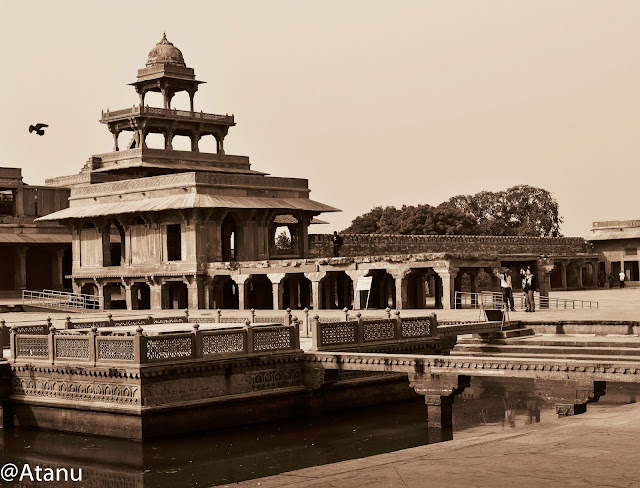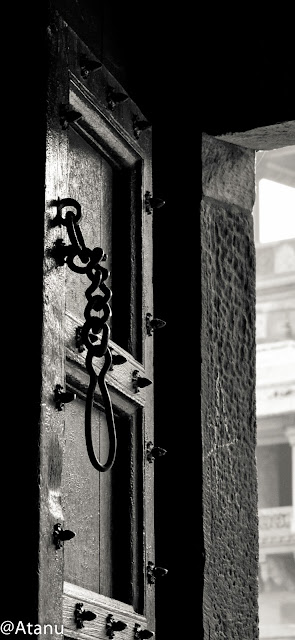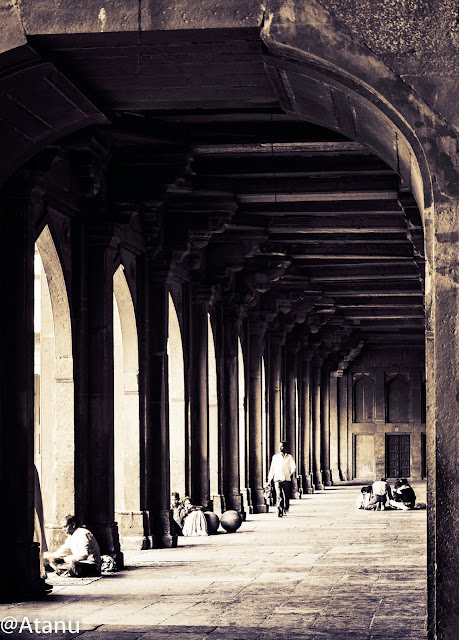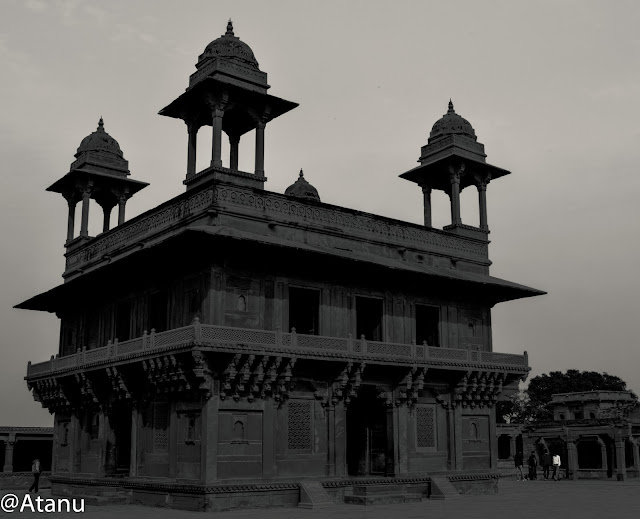Fatehpur-Sikri – the twin city
established by Akbar in 1571 is about an hour’s drive from Agra. This place was
the capital of India for about 15 years before the emperor decided to move out
of this place due to severe water crisis. Nevertheless, this place is so deeply
soaked in history and has such splendid example of architecture of Akbar’s era
that it is a must watch for every visitor who touches Agra.
The history of this place is well
known, and, in parts, resembles a fairy tale. It is the tale of a powerful
emperor who has everything except an heir to his throne. And after every
treatment, every astrological calculations and blessings from every saint
failed, Akbar, the emperor chose to visit a low profile reclusive Sufi saint
who stays at a deserted place called Sikri. It seems that the blessings of this
Sufi saint – Salim Chistie had more power than the rest and Akbar was blessed
with a boy the very next year; a boy who was named Salim after the saint and
who later on was the successor to Akbar; a boy whom history knows as Jahangir
Fatehpur Sikri boasts of superb
architectures made in red sandstone which followed the classical Indo-muslim
and Persian traditions. The architecture clearly depicts the supremely “masculine”
style of Akbar (as against the obviously feminine delicateness of Shah Jahan’s
era) and is probably the sole survivor of Akbar’s architectural style. This
place boasts of the majestic Buland Durwaza (constructed to commemorate
annexation of Gujrat), Panch Mahal or Badgir, Diwan-i-Khas and the Anup Talao.
See my blog on the same subject at










.jpg)
Comments